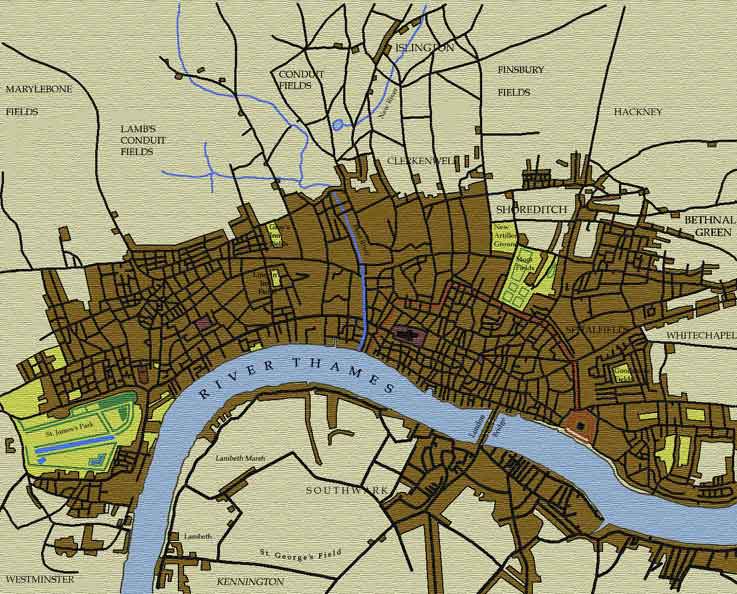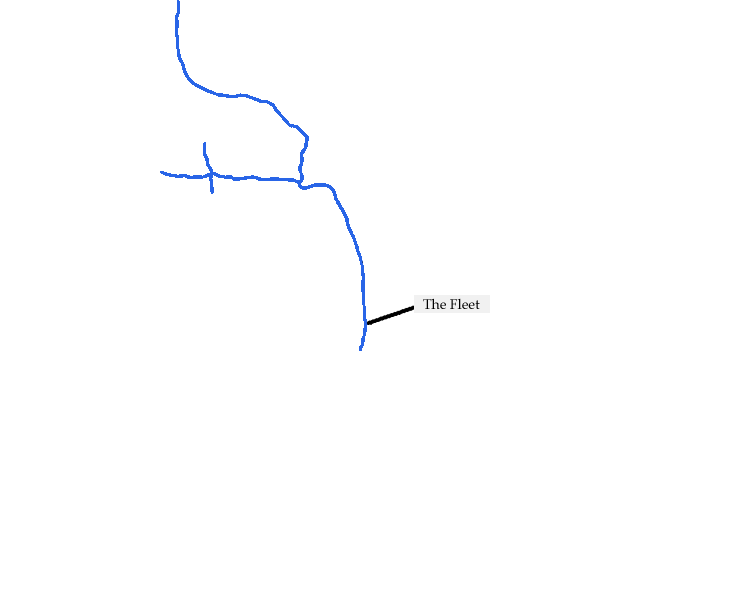


London ca. 1676
The Fleet River
|
One of the more notorious features of Restoration and eighteenth-century London was the Fleet, which was, at various times in its long history, a stream, a canal, a gutter, and a closed sewer. The neighbourhood around the banks of the Fleet was perennially squalid, poor, and unfashionable, and the river itself was very nearly always treated as a kind of embarrassment by Londoners. |
|
Although once apparently commodious enough to accommodate a fair degree of light shipping, the Fleet had, by the 16th century, become shallow and slow-running; easily obstructed, it filled with rubbish and became intolerably smelly. Attempts throughout its history to clean it up, and prohibit its use as a waste dump, nearly always proved futile; one such ineffectual attempt was made in 1652. The rebuilding of London following
the Great Fire presented an opportunity to remodel the Fleet entirely:
Sir Christopher Wren had, as part of his plan for the rebuilding of London,
proposed widening it, and laying out broad embankments on either side.
Wren's ambitious plans were not fully realized, but the lower part of
the river was, under his supervision, and that of Robert Hooke, dredged
and widened into a canal, which was completed in October of 1674. The
river was straightened, and provided a greater width of up to 50 feet,
from Holborn down to the Thames; the banks were levelled with brick and
stone, and provided with new wharves, while the section of the river north
of Holborn to the City wall was covered over. Unfortunately, the new Fleet Canal was apparently little used for its new intended purpose, and the lack of commercial traffic employing it doomed it; it soon reverted to its earlier function as a dump for raw sewage and rubbish. In 1733, it was arched over from Holborn Bridge to Fleet Bridge, the river running under what is now Farringdon Road. In 1766, after a drunken butcher who had fallen in the sludge froze to death, the remainder of the Fleet was arched over: it became, and indeed remains, a part of London's underground sewer system.
|
 |
Website maintained by: Mark
McDayter
Website administrator: Mark McDayter
Last updated: April 25, 2002